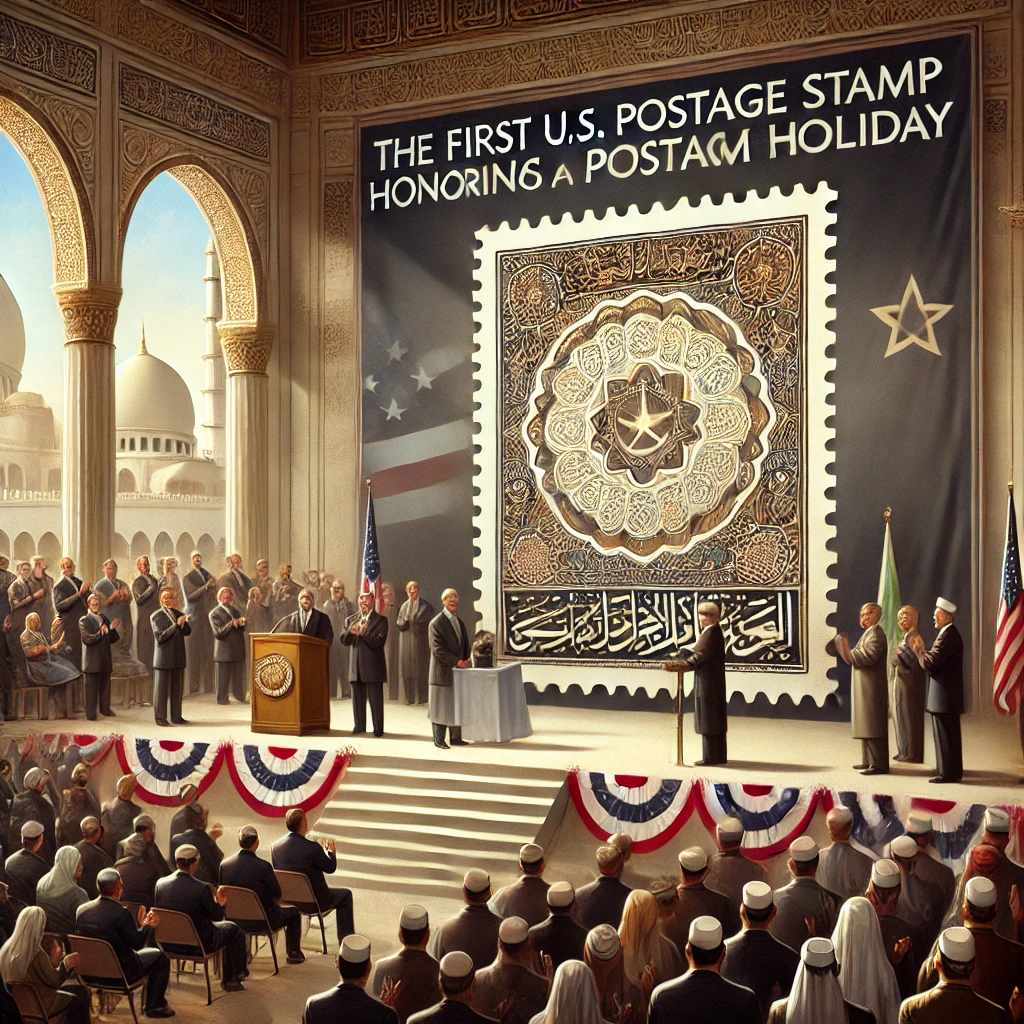On September 1, 2001, the United States Postal Service (USPS) issued its first-ever postage stamp commemorating a Muslim holiday, marking a significant milestone in the recognition and inclusion of diverse cultural and religious traditions in American society. The stamp, featuring an image celebrating the Islamic holiday of Eid al-Fitr, symbolized a broader acceptance and understanding of the Muslim community in the U.S.
The issuance of this stamp was a landmark moment for the USPS and for the Muslim American community. The stamp’s design showcased the festive nature of Eid al-Fitr, which is celebrated at the end of Ramadan, the Islamic holy month of fasting. This recognition was an important step toward acknowledging the diverse cultural and religious landscape of the United States, reflecting the nation’s growing inclusivity and appreciation of different traditions.

Significance and Design
The Eid al-Fitr stamp was part of the USPS’s annual series of holiday stamps, which traditionally feature major Christian and secular holidays. By including Eid al-Fitr, the USPS demonstrated a commitment to representing a broader array of cultural and religious celebrations. The stamp’s design featured a traditional motif associated with Eid al-Fitr, including vibrant colors and festive elements that conveyed the joy and communal spirit of the holiday.
The decision to issue a stamp for Eid al-Fitr came after years of advocacy by Muslim American organizations and community leaders. This effort highlighted the desire for greater representation and recognition of Muslim traditions within mainstream American culture. The stamp not only honored a significant religious holiday but also served as a symbol of respect and inclusion for the growing Muslim population in the U.S.

Impact and Legacy
The release of the Eid al-Fitr stamp had a profound impact on the Muslim American community and on the broader public perception of Islamic traditions. It marked the first time that a U.S. postage stamp specifically honored a Muslim holiday, reflecting a shift towards greater diversity in national symbols and representations. The stamp’s issuance was seen as a positive step in promoting cultural understanding and acceptance.
In addition to its cultural significance, the stamp served as an educational tool, helping to raise awareness about Eid al-Fitr and Islamic practices among the general public. By featuring the stamp, the USPS contributed to fostering a more inclusive and informed society, where diverse traditions are celebrated and respected. The stamp’s legacy continues to resonate as a symbol of progress in recognizing and honoring the rich tapestry of American culture.

The issuance of the Eid al-Fitr stamp on September 1, 2001, stands as a noteworthy achievement in the realm of cultural representation. It exemplifies the evolving nature of American society, where diverse traditions are increasingly acknowledged and celebrated. The stamp remains a testament to the ongoing efforts to embrace and honor the rich cultural heritage of all communities within the United States.
